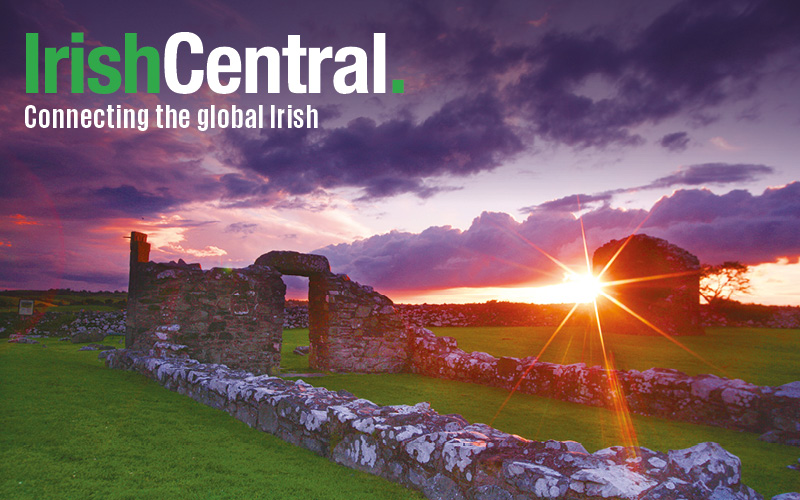The Fighting 69th will once again lead the St. Patrick’s Parade this year in New York this year. They will be lead by Major Sean Flynn who led them most recently in combat in Baghdad.
Their battle cry “Fagh an Bhealach” (Clear the Way) resonated for generations of Irish and is enshrined in legend.
Their most famous leader was Thomas Francis Meagher, “Meagher of the Sword” who took part in the 1848 Young Irelanders rebellion before fleeing Ireland.
The most gallant Irish fighting force in history perhaps, they won their spurs during the American Civil War protecting liberty.
Ironically, it was General Robert E. Lee of the Confederate Army who christened them saying ruefully “Ah yes That Fighting 69th” after witnessing their bravery at Fredericksburg against his own troops.
Here are some comments by authors and historians on the brigade whose banners will fly high on St. Patrick’s Day on Fifth Avenue:
William F. Fox "Regimental Losses In The Civil War" (1889) Page 118:
“The Irish Brigade was, probably, the best known of any brigade organization, it having made an
unusual reputation for dash and gallantry. The remarkable precision of its evolutions under fire; its
desperate attack on the impregnable wall at Marye’s Heights;(At the Battle of Fredericksburg) its never failing promptness on every field, and its long continuous service, made for it a name inseparable from the history of the war.”
- Joseph G. Bilby "Remember Fontenoy!" Introduction:
“It was, many said, the best brigade in the Army of the Potomac. Some said it was the best brigade
in the whole Union army and perhaps the best infantry brigade on either side in the American Civil
War. Others, with the perspective of history, have come to believe it may have been the best
infantry brigade that ever was.”
- William F. Fox
"Final Report on the Battlefield of Gettysburg – New York at Gettysburg," p. 485:
“It would be impossible to write the history of the Army of the Potomac without giving the highest
of praise to the gallant Irish Brigade… Their deeds will be remembered in song and in story so long
as the history of our country is read. Irishmen everywhere have reason to be proud of the Irish Brigade.”
- Speech of Col. James D. Brady, 63rd New York
“The Irish Brigade’s loss of 961 soldiers killed or mortally wounded in action was exceeded by only
two other brigades in the Union army.”The other two were the Vermont Brigade, and the Iron Brigade.”
- William F. Fox: "Regimental Losses in the Civil War"
“The Irish Brigade never lost a battle flag in combat, and captured more than twenty enemy flags."
- D. P. Conyngham “The Irish Brigade” 1867 p. 224
"The Irish Brigade never lost an artillery battery it was assigned to support, nor a position given them
to hold until ordered to withdraw."
- "New York at Gettysburg" – Speech of Dennis F. Burke, on July 2, 1888, the dedication of the Irish Brigade Monument at Gettysburg.
“It never disobeyed an order in combat. The Irish Brigade was the Second Brigade, 1st Division, Second Corps, Army of the Potomac. This division and corps were known for hard fighting.
“But the hardest fighting and greatest loss of life occurred in the First Division of the Second Corps,
Hancock’s old division, in which more men were killed and wounded than in any other division in the
Union Army, East or West.”
“From Yorktown to Appomattox the same old spirit prevailed throughout the brigade that characterized
the Irish soldier the world over. It was full of fun, full of frolic, and full of fight. It was a noble brigade.
It was a grand organization, magnificently officered, perfectly disciplined. On the march, in the camp,
or in battle, it was ever cheerful and brave, ever ready to respond to the bugle call.”
“It is a grand and glorious record.”
“Its name will live in history. Its record was unsurpassed.”
- Robert Nugent, 69th New York "New York at Gettysburg."
Fair Oaks May 29 - June 1, 1862
“There was the Irish Brigade in all the glory of a fair, free fight. Other men go into fights finely,
sternly, or indifferently, but the only man that really loves it, after all, is the green, immortal
Irishman.
“So, there the brave lads from the old sod, with the chosen Meagher at their head, laughed, and fought, and joked, as it were the finest fun in the world.”
- Dr. Thomas Ellis “Leaves From the Diary of an Army Surgeon.”
“We are in Meagher’s Brigade, Richardson's division, Sumner's Corps. If there is another fight before Richmond I will be in it as we are in the fighting brigade; it was this brigade that turned the battle here. Meagher makes his men charge. He won’t let them turn off and fire.”
From William E. Short 29th Massachusetts Fair Oaks Station (written about June 6, 1862).
The Seven Days’ Battles, June 26 – July 1, 1862
Gaines Mill, June 27, 1862
“Saved the army”
The arrival of French’s and Meagher’s Brigades of Sumner’s Corps at the very end of this battle saved
the Fifth Corps from destruction, and in saving the Fifth Corps, they saved the army.
General McClellan, in his official report of this battle, refers to the actions of French’s and Meagher’s Brigades:
“About 5 PM General Porter having reported his position as critical, French’s and Meagher’s brigades of Richardson’s division (Second Corps), were ordered to come to his support. The enemy attacked again in great force at 6 PM, but failed to break our lines, though our loss was very heavy. About 7 PM they threw fresh troops against General Porter with still greater fury, and finally gained the woods held by our left. This reverse, aided by the confusion that followed an unsuccessful charge of five companies of the Fifth (US) Cavalry, and followed as it was by more determined assaults on the remainder of our lines, now outflanked, caused a general retreat from our position to the hill in rear, overlooking the bridge. French’s and Meagher’s brigades now appeared, driving before them the stragglers who were thronging toward the bridge. These brigades advanced boldly to the front, and by their example, as well as by the steadiness of their bearing, reanimated our own troops.”
Major John Dwyer, 63rd New York "New York at Gettysburg"
“General Meagher was at the head of his Brigade. When he saw (Colonel Cass, of the Ninth Massachusetts) …he called out, 'Colonel Cass, is this you?'
“'Hallo, General Meagher, is this the Irish Brigade? Thank God, we are saved.' The Irish Ninth made a remarkable fight that day.”
After Fredericksburg The London Times correspondent William H. Russell (himself Irish-born) wrote, “Never at Fontenoy, Albuera, or at Waterloo was more undaunted courage displayed by the sons of Erin than during those six frantic dashes which they directed against the almost impregnable positions of their foe.”
Love Irish History? "Like" IrishCentral's History Facebook page now and you'll never miss an update again!




Comments